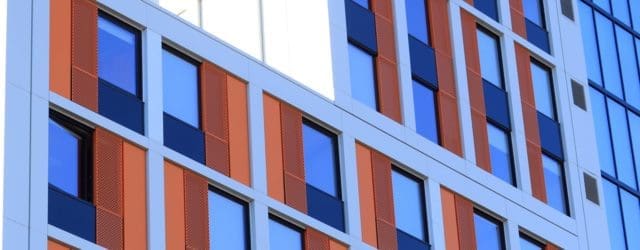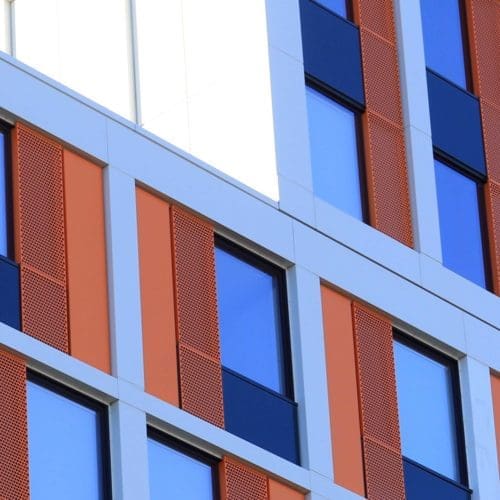Lacrosse Tower – Cladding Developments Down Under
April 2021Tanah Merah Vic Pty Ltd v Owners’ Corporation No 1 [2021] VSCA 72
On 26 March 2021, Victoria’s Supreme Court of Appeal (“VCoA”) handed down judgment on an application seeking leave to appeal the Lacrosse Tower decision. As readers may recall, the first instance decision, which we discuss in detail here and summarise below, found that a contractor liable to pay damages to the owners of an apartment building damaged by a combustible cladding fire could almost wholly apportion its liability to the fire engineer, building surveyor and architect on the project.
While of no binding effect on the courts of England and Wales and fact specific, the case, and the subsequent application seeking leave to appeal by the professional consultants discussed here, is thought to be the first judicial apportionment of liability in respect of combustible cladding in a common law jurisdiction.
The decision of the VCoA provides little reprieve for the consultants and their insurers. By refusing to grant the consultants leave to appeal 10 out of 11 of the issues raised, the VCoA has upheld the first instance decision that although the contractor was in breach of an implied warranty under Victoria’s Domestic Building Contract Act and Victoria’s Building Act (as it was found that the tower did not comply with the Building Code of Australia (“the Building Code”)), it was found to be not negligent for the installation of the combustible cladding, which was specified and approved by the architect, building surveyor and fire engineer.
Background
In the early hours of 24 November 2014, a fire broke out on the balcony of an apartment in the 21 storey Lacrosse Tower in Melbourne, Australia. The source of the fire was found to be an unextinguished cigarette butt, left in a plastic container sitting on a timber-topped table on the apartment’s balcony.
After spreading from the plastic container to the table, the fire reached the external cladding of the building, which was comprised, in part, of aluminium composite panels (“ACP”) (‘Alucobest’) containing a polyethylene core. The fire spread rapidly up the external face of the building, causing substantial damage.
First Instance Decision
In March 2016, proceedings were issued on behalf of owners’ corporations and apartment owners in the Lacrosse Tower (“the Owners”), and directed against eight respondents, including LU Simon Pty Ltd (the “Contractor”), and its professional consultants: the building surveyor (and his employer), the architect and the fire engineer.
In the Victorian Civil and Administrative Tribunal (“VCAT”), the claims were separated into two parts, respectively: (1) the claims of the Owners against each of the respondents; and (2) the claims of the Contractor against each of the other respondents. On 28 February 2019, the VCAT delivered its judgment in both claims.
The VCAT ruled that the Contractor had breached the warranties implied into its contract for the design and construction of the Lacrosse Tower under sections 8(b), (c) and (f) of the Domestic Building Contracts Act 1995 (Vic). On that basis, the Contractor was liable to the Owners for the damages that they suffered due to the fire. Significantly, however, the VCAT concluded that the Contractor had not failed to exercise reasonable skill and care.
The VCAT next turned to the Contractor’s claim against the other respondents. In a landmark ruling, the Court determined that the Contractor could recover the damages that were payable by it to the Owners in their near entirety from the building surveyor’s employer, the architect, and the fire engineer – in effect, indemnifying the Contractor against the damages payable, in the following proportions (the “Consultants”):
- The fire engineer: 39%;
- The building surveyor: 33%; and
- The architect: 25%.
The remaining 3% was held attributable to the resident, as the incompletely extinguished cigarette was the initial cause of the fire, however it was held that this amount would instead be payable by the contractor. This is because the resident did not take part in the proceedings.
Unlike the Contractor, each of the Consultants was found to have failed to ‘exercise due care and skill in the provision of their services’, a duty they owed to the Consultant under their respective consultancy agreements. The Consultants’ failures in this regard centred around their apparent ignorance to the fact that the ACP panels used in the Lacrosse Tower were non-compliant with the Building Code, which provides specific measures concerning the use of non-combustible cladding in high-rise residential buildings.
The Appeal
The Consultants sought to appeal the decision of the VCAT. In its judgment, the VCoA addresses 11 issues identified as requiring resolution. The VCoA refused to grant leave to appeal to the Consultants on all but one ground, Issue 10.
Issues 1 – 3: Were the Owners’ claims against the respondents apportionable claims under Part IVAA of the Wrongs Act 1958? Was the Contractor a concurrent wrongdoer in respect of the consultants for the purposes of section 24AH of the Wrongs Act? Did the Contractor fail to take reasonable care?
At first instance, the VCAT determined that the Contractor’s liability for its breach of the implied warranties owed to the Owners was not apportionable, as it did not arise from a failure on the part of the Contractor to exercise reasonable skill and care. On appeal, the Consultants argued that the VCAT had erred in reaching that conclusion.
The VCoA held that the VCAT was correct to find that the Owners’ claims against the Contractor were not apportionable under Part IVAA of the Wrongs Act, where they did not arise from a ‘failure of the Contractor to take reasonable care’. The VCoA noted that in determining whether such a failure had taken place, it was necessary to consider the terms on which the claim was framed.
Issue 4: On the proper construction of the T2 Specification and the architect’s drawings, was the Contractor directed and / or permitted to select the product Alucobest or any composite metal cladding product that was contrary to the Building Act 1993 and the Building Code?
No. Based on the terms of the architect’s appointment and the reality of its role, it could not be said that the Contractor was solely responsible for selecting Building Code compliant ACPs. The T2 Specification (which formed part of the architect’s design of the external walls of the proposed building) did not pass all design responsibility from the architect to the Contractor, such that the architect was not liable for decisions as to the selection of materials provided for in the T2 Specification.
Issue 5: Did the VCAT err in finding that the architect was negligent in respect of its inspection and approval of the Alucobest sample?
No. The architect had an obligation to inspect and approve samples. The VCoA dismissed the architect’s suggestion that this obligation was limited to the inspection and review of the visual characteristics of the sample only. It would make no commercial sense for the architect’s obligation to be qualified in that sense.
Issue 6: Was it reasonably open to the VCAT to find that the Owners’ loss included an increase in insurance premiums?
Yes. The architect submitted that, amongst other things, the evidence on this issue that had been tendered by the Owners was hearsay and that it failed to prove that there had been an 80% increase in premiums due to the existence of unburnt non-compliant cladding on the Lacrosse Tower after the fire.
However, the VCoA determined that the VCAT had been presented with valid evidence in support of the Owners’ claim. Whilst, at the time, the architect had submitted that this evidence was insufficient, it had not rejected to the tender of said evidence. The VCAT had complied with the procedural requirements as to the evidence, and it was sufficient to support the Owners’ claim for damages in respect of the claimed increase in insurance premiums.
Issue 7: Did the VCAT err in its construction of clause C1.12(f) of the Building Code?
No. The fire-resistance provisions of the Building Code required that the external walls of the Lacrosse Tower were made of non-combustible materials. Whether a material was / was not non-combustible would be determined by their performance in a test under AS 1530.1. ACPs of the type used on the Lacrosse Tower would fail this test. However, ACPs could nevertheless have been used on the Lacrosse Tower if they could be justified in accordance with the Building Code or a specific ‘deemed to satisfy’ provision.
The building surveyor was contracted by the Contractor to ensure that the design and the materials used in the Lacrosse Tower’s construction were compliant with the Building Code. It submitted that the ACPs that were used were compliant with the Building Code due to a particular ‘deemed to satisfy’ provision.
The VCoA disagreed that the ‘deemed to satisfy’ provision relied upon by the building surveyor applied to the relevant circumstances. Instead, it preferred the VCAT’s analysis of the provision, ruling that it could not be applicable when giving effect to the language of the provision read as a whole and when considering the underlying purpose of the relevant section of the Building Code – to provide for effective fire safety in buildings of particular types.
Issue 8: Did the VCAT err in its conclusion that the ‘peer professional opinion’ was ‘unreasonable’ for the purposes of section 59(2) of the Wrongs Act 1958?
No. In certain circumstances, section 59 of the Wrongs Act enables a ‘peer professional opinion’ to constitute a defence to claims of negligence on the part of those practising in the relevant profession.
Under section 59(2) of the Wrongs Act, this ‘peer professional opinion’ cannot be relied upon where the court determines that the opinion is unreasonable. Here, the building surveyor sought to justify its issuance of a building permit (despite the use of Alucobond with a polyethylene core) on the Lacrosse Tower in reliance on this defence.
Whilst the VCoA accepted that, in the first instance, the VCAT mistakenly asked whether the relevant practice was unreasonable (as opposed to whether the ‘peer professional opinion’ was unreasonable), the VCAT’s analysis inherently meant that it addressed that question anyway. By concluding that the basis of the relevant practice did not withstand logical analysis, it had determined whether the acceptance of the relevant practice was unreasonable.
Issue 9: By issuing the Stage 7 Building Permit did the building surveyor make a representation to the Contractor that was misleading and deceptive?
This issue was not dealt with as it required that leave to appeal was granted on either issue 7 or 8.
Issue 10: Was the building surveyor’s failure to identify and remedy the omission in the Fifth FER causative of any loss?
No. The fifth iteration of the Fire Engineering Report prepared by the fire engineer did not identify the use of ACPs in the cladding system of the Lacrosse Tower. This was significant, as this Fire Engineering Report formed the basis of an application to the Metropolitan Fire Brigade for Building Regulations approval.
The VCoA determined that the VCAT was incorrect to say that the building surveyor’s failure to query the FER may have led to an alternative cladding proposal, as evidence elsewhere determined that the fire engineer was aware of the use of ACP’s in any event. Therefore, the building surveyor was granted leave to appeal on this ground only.
Issue 11: Did the VCAT fail to consider the degree of departure by the building surveyor from the relevant standard of care in making apportionment findings?
No. On “fair reading” of the VCAT’s judgment, it could be evidenced that it had both assessed the departure from the standard of care by the parties as a relevant factor and that it had regard to the fact that the building surveyor had acted in a manner consistent with widely accepted practice amongst building surveyors.
Commentary
As litigation surrounding the use of combustible cladding continues in our domestic courts in the wake of the Grenfell Tower tragedy, this decision will be of note to professional consultants, contractors and their insurers alike.
Whilst it must be stressed that this is a decision based upon its own facts, applicable law and has no binding effect on the courts of England and Wales, it is nevertheless a useful indicator as to the defences that may be run, and the way liability may potentially be apportioned in cases of non-compliant combustible cladding in common law jurisdictions
Whether a contractor will be able to emerge unscathed is largely dependent on the specific terms of the contracts agreed with each of the parties, the circumstances of the construction of the project and the level of involvement of the contractor with the selection and specification of the cladding chosen. In this case, it was held that the Contractor was able to rely on the Consultants’ expertise with respect to the façade.
It remains to be seen whether the court’s finding with respect to Issue 10, i.e., that the building surveyor’s failure to question the fire engineering report was not causative of any loss, will impact the apportionment of liability between the Consultants. As to the remainder of the issues on which leave was sought, the Consultants now have the option to appeal the VCoA’s refusal to grant leave in the High Court of Australia.
Download PDF










